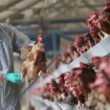For the textile business, 2025 is looking to be a year full of chances as well as obstacles. The worldwide scene can be ruled by using 3 essential pillars: era, personalisation, and sustainability. The use of synthetic intelligence in fashion is becoming increasingly more vital. Sustainability stays at the leading edge as consumers search for materials that lessen their impact on the environment and moral commercial enterprise practices. The fabric sector is headed for a thrilling yr. in 2025, driven by the interaction of purchaser sentiment, environmental developments, and growing generation. Businesses which are eager to innovate will gain the maximum because the industry as a whole responds to emerging trends and sparkling opportunities to draw extra informed purchasers. Here are some potential future developments based on T & A Textiles & Hosiery Reviews that we currently understand.
An Unpredictable Trade Situation
In recent years, the fashion industry has experienced slow growth. In addition, the possibility of new taxes is making international trade more unstable. This development has a particular impact on the textile and apparel sector because of its intricate global supply lines. With 37.5% of global exports in 2023 coming from China, the country remains the world’s largest exporter of clothing; thus, tariffs on Chinese items will probably force businesses to reconsider their sourcing practices.
Environmental Effects of Fashion
One of the main causes of climate change is the textile and apparel sector, and its environmental effects are getting worse. Approximately 2% to 4% of total greenhouse gas emissions are attributed to the industry, according to conservative estimates. Industry emissions are expected to rise by over 40% by 2030, assuming business-as-usual growth, and then drop by nearly 45% to remain within a 1.5°C trajectory. Since the emergence of fast fashion, the production of clothing has increased dramatically worldwide, making it potentially very difficult to reduce industry emissions.
Since 2000, the world’s fibre production has more than doubled, and in 2023, it hit a record-breaking 124 million tons. If present trends continue, this is predicted to increase to 160 million tons in 2030. Since the mid-to-late 2000s, polyester has surpassed cotton as the most extensively used fibre worldwide, which is mostly due to its contribution to this expansion.
A Growing Regulatory Momentum
The textile and apparel sector will be greatly impacted by the growing impetus for sustainability rules in a number of international jurisdictions. The EU Strategy for Sustainable and Circular Textiles was approved by the European Commission in 2022 as part of the European Green Deal. In order to make textiles survive longer and be easier to repair and recycle, the plan takes into account the full lifetime of textile goods. It also contains regulations for minimum recycled content.
The Economy and Technology
Economics and technology will be two key determinants of the textile business in 2025.
In terms of technology, brands may use AI to predict trends and better plan for changes in sales, both positive and negative, while reducing waste and increasing overall efficiency. Businesses will be able to meet the increased demand for high-quality textiles despite a manpower crisis because of significant advancements in automation and robots.
Customers will continue to expect wellness advantages from all facets of their lives, and textiles and innovation will continue to marry. Bonus-giving fabrics will receive more attention, and fitness enthusiasts’ smart-sensor gear may finally reach critical mass while enabling consumers to monitor the small improvements made possible by wearing their wellness clothes.
Nonetheless, microfinance for the purchase of high-quality raw materials from underdeveloped nations is a definite improvement. Companies are investing in family-owned farms and smaller businesses, adhering to fair trade norms and improving the lives of workers in the process, driven by traceability and the desire for goods sourced ethically.
Complete Alignment
Things remain more or less the same, the more they change. A fresh emphasis on reaching customers where they are in their social, political, and personal lives will result from the changes that 2025 will bring, just like any other new year. Quality is paramount, comfort is paramount, and sustainability is now a “table stakes” requirement rather than a nice-to-have.
Final Words
In addition to facing a challenging market environment and possible supply chain interruptions, textile and garment brands are now under pressure to fulfil rising regulatory standards. Investors may choose businesses that are well-positioned to handle the difficulties and seize the opportunities presented by these trends with the assistance of the corporate Rating.









